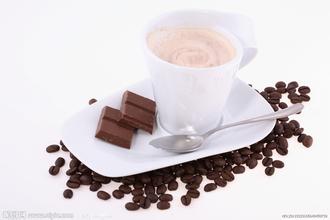Antigua Guatemala Fine Coffee Atitlan Region in Volcanic Region
The global trend of modern coffee has gone through three popular stages, the first stage is from World War II to the 1960s, instant coffee represented by cheap coffee popular; the second stage is from the 1960s to the beginning of this century, Starbucks represented by commercial coffee popular; the third stage originated in the 1970s and began to become a trend in the past decade, especially in Japan and South Korea has been greatly developed.
Guatemala aroma 3.5 points brightness 4.5 points mellow 3.5 points flavor 4.5 points aftertaste 4.5 points
Suitable for roasting degree: Light/Medial/City light roasting, city degree can best show the characteristics of Guatemala coffee, too deep will reduce the fruit fragrance, if you like smoky flavor, you can roast close to two explosions, but still do not enter the principle of two explosions.
Because the United States is deeply involved in coffee farming in this country, and exploitation is also heavy, huge North American multinational groups control the vast majority of production areas, producing low-altitude, low-quality coffee at extremely low wages! These bad coffees do not represent real Guatemala coffee. In fact, Guatemala is blessed with excellent growing conditions, many of which are ideal for altitude, soil and climate conditions, so that it can produce the most complex and delicate coffee in the world. The most famous is Antigua, a volcanic region known for its smoky coffee, spices and fruit acids. Huehuetenango, to the north, has a more fruity but slightly lighter flavor than Antigua. In addition, coffee from Covin, Freijanes and Quiche also has its own characteristics. In recent years, coffee from Attitlan has occasionally been excellent.

Important Notice :
前街咖啡 FrontStreet Coffee has moved to new addredd:
FrontStreet Coffee Address: 315,Donghua East Road,GuangZhou
Tel:020 38364473
- Prev

Introduction to Jamaican Blue Mountain Coffee with rich, balanced, fruity and sour taste
The unique flavor of Blue Mountain Coffee is related to its unique geographical location and climatic conditions. Blue Mountain is a coffee belt between 25 degrees north latitude and 25 degrees south latitude, with fertile new volcanic soil, fresh air, no pollution, rainy all the year round and great temperature difference between day and night. The most important thing is that every afternoon, clouds cover the top of the mountain, which not only shades the coffee trees naturally, but also brings abundance.
- Next

Rich flavor and mild taste Haiti: Port-au-Prince Coffee
In 1725, Haiti officially began to grow coffee in the north, and now produces and exports about 600000 bags of coffee a year. Unfortunately, even in the final selection stage, Haiti does not distinguish between the quality of coffee beans on each farm. Coffee beans are mixed with the good and the bad. General Haitian coffee, mainly exported to European countries, led by France, used to make blends
Related
- Does Rose Summer choose Blue, Green or Red? Detailed explanation of Rose Summer Coffee plots and Classification in Panamanian Jade Manor
- What is the difference between the origin, producing area, processing plant, cooperative and manor of coffee beans?
- How fine does the espresso powder fit? how to grind the espresso?
- Sca coffee roasting degree color card coffee roasting degree 8 roasting color values what do you mean?
- The practice of lattes: how to make lattes at home
- Introduction to Indonesian Fine Coffee beans-- Java Coffee producing area of Indonesian Arabica Coffee
- How much will the flavor of light and medium roasted rose summer be expressed? What baking level is rose summer suitable for?
- Introduction to the characteristics of washing, sun-drying or wet-planing coffee commonly used in Mantenin, Indonesia
- Price characteristics of Arabica Coffee Bean Starbucks introduction to Manning Coffee Bean Taste producing area Variety Manor
- What is the authentic Yega flavor? What are the flavor characteristics of the really excellent Yejasuffi coffee beans?

